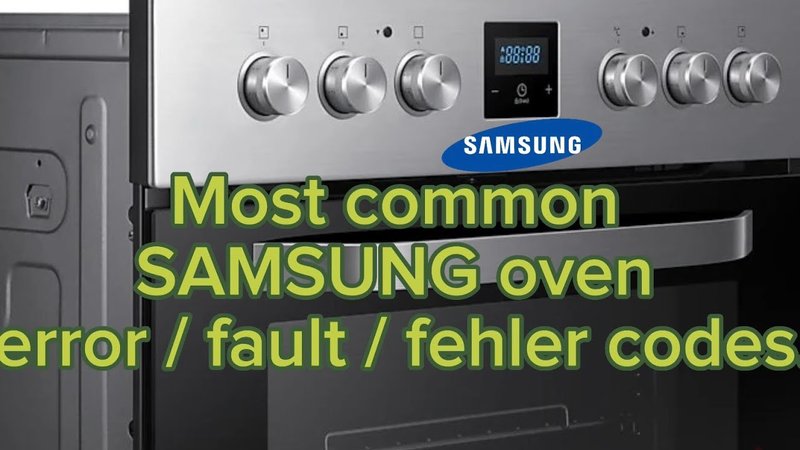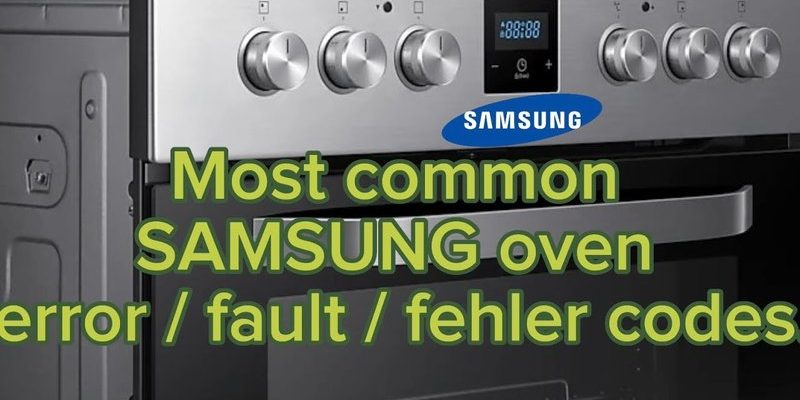
The “LE” error code generally signifies a problem with the oven’s locking mechanism. In simpler terms, it’s like having a door on your oven that refuses to shut or open properly. If you’re not sure why this is happening, think of it like a car door that’s stuck — it won’t allow you to drive comfortably (or safely) without fixing it. Ignoring this issue can lead to bigger problems down the line, which is why it’s important to address it sooner rather than later.
Understanding the “LE” Error Code
When you see an “LE” error on your Samsung oven or range, it typically points to a malfunction with the appliance’s lock. This lock mechanism is crucial because it ensures the oven door stays securely shut during high-heat operations like self-cleaning. Without a proper lock, the heat could escape, affecting both cooking efficiency and safety. Imagine trying to bake a cake with the oven door slightly ajar—definitely not ideal!
Interestingly, this problem is often tied to the self-cleaning function. If the door won’t lock or unlock during this cycle, the error code acts as a helpful but insistent reminder that something’s wrong. It’s equivalent to your phone constantly buzzing when a new text comes in—you can’t just ignore it. This error is your oven’s way of letting you know that it needs some attention.
You might be wondering why it even matters. Well, a faulty lock can lead to energy inefficiency, uneven cooking, or even safety hazards. It’s like leaving a window open during winter—not only are you losing precious warmth, but you’re also inviting potential issues like increased energy bills and discomfort. Similarly, a malfunctioning oven lock can mess with your cooking outcomes and even pose a safety risk if not addressed.
Potential Consequences of Ignoring the Error
Failing to fix the “LE” error can have several consequences. For starters, it may prevent you from using your oven’s self-cleaning feature altogether. Without the ability to properly clean itself, your oven can accumulate grease and grime over time. This buildup isn’t just unsightly—it can also lead to unpleasant odors and even become a fire hazard. Picture a kitchen where you can’t get rid of burnt-on messes; you’d probably hesitate to cook anything, right?
Moreover, an unresolved “LE” error can cause your oven’s performance to degrade. You might find that it takes longer to preheat or that your dishes aren’t cooking evenly. This is similar to driving a car with a flat tire—sure, you might still reach your destination, but the journey will be rough and inefficient. Over time, the strain on the oven can lead to more serious issues, requiring extensive repairs or even a full replacement.
There’s also the safety aspect to consider. An oven door that won’t lock during self-cleaning can inadvertently open, releasing intense heat into your kitchen. This poses a clear safety risk, much like walking away from a pot of boiling water that could easily spill. Addressing the “LE” error ensures that your kitchen remains a safe environment for you and your family.
Steps to Address the Error
Fixing the “LE” error can be straightforward if you know what to do. First, try resetting your oven by turning it off at the electrical panel for a few minutes, then switching it back on. This simple action often resolves minor electronic glitches. Think of it as rebooting a frozen computer—sometimes a fresh start is all it takes to clear up the confusion.
If the reset doesn’t work, you’ll want to inspect the lock mechanism itself. Look for any visible obstructions or signs of damage that could be preventing it from operating smoothly. Gently cleaning the latch area might help if dirt or debris is causing the problem. It’s akin to clearing out the lint trap in your dryer—sometimes maintenance requires nothing more than a little tidying up.
Should these steps fail, consulting the user manual or contacting Samsung support might be necessary. Sometimes the best solution involves expert knowledge or replacement parts, just like how a professional mechanic might be the best person to fix a car’s engine troubles.
Preventative Measures and Final Thoughts
To prevent future occurrences of the “LE” error, regular maintenance is key. Clean your oven and its components frequently to avoid buildup that can interfere with the locking mechanism. It’s like brushing your teeth to prevent cavities—consistent care can stave off bigger issues.
Another tip is to use the self-cleaning function judiciously. While it’s convenient, over-reliance can strain the lock system. Think of it like running a marathon without proper training; you need to balance use and rest to maintain peak performance. Only run the self-clean cycle when absolutely necessary to prolong the lifespan of your appliance.
It’s tempting to ignore issues like the “LE” error, but doing so can lead to a host of complications that are both inconvenient and potentially costly. Addressing it promptly ensures that your Samsung oven or range remains a reliable kitchen companion. After all, who doesn’t appreciate a smoothly running kitchen where every meal is a masterpiece? By taking a proactive approach, you’re not just fixing a problem—you’re safeguarding your cooking experiences for the future.
